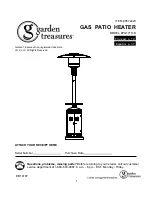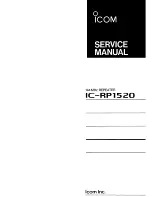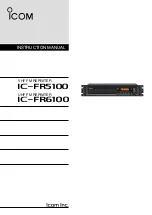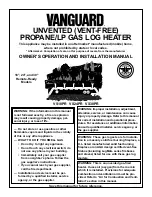
35
Installation
These installations utilize the heater-mounted blower to
vent the combustion products to the outdoors. Combustion
air is taken from inside the room or directly from outdoors
and the vent is installed horizontally through the wall to the
outdoors. Adequate combustion and ventilation air must
be supplied to the equipment room in accordance with
the NFGC (U.S.) or B149 (Canada). For combustion air in
different pressure zones, see
Figure 35
.
The total length of the horizontal through-the-wall flue
system should not exceed the maximum equivalent ft in
length. See
Table S
for maximum length
.
If horizontal
run exceeds the maximum equivalent ft, an appropriately
sized variable-speed extractor must be used. Each elbow
used is equal to 10' (3 m) of straight pipe. This will allow
installation in one of the four following arrangements
(example shown for Model 1006 with 6" vent):
•
100 ft (30 m) of straight flue pipe
•
90 ft (27 m) of straight flue pipe and one elbow
•
80 ft (24 m) of straight flue pipe and two elbows
•
70 ft (21 m) of straight pipe and three elbows
The vent cap is not considered in the overall length of the
venting system.
The vent must be installed to prevent flue gas leakage.
Care must be taken during assembly to ensure that all
joints are sealed properly and are airtight. The vent must
be installed to prevent the potential accumulation of
condensate in the vent pipes. It is required that:
3. The vent must be installed with a condensate drain
located in proximity to the heater as directed by the
vent manufacturer.
4. The vent must be installed with a slight upward slope
of not less than 1/4" per foot of horizontal run to the
vent terminal.
Termination
The flue direct vent cap MUST be mounted on the exterior
of the building. The direct vent cap cannot be installed in a
well or below grade. The direct vent cap must be installed
at least 1' (305 mm) above ground level and above normal
snow levels. The Raypak approved horizontal, stainless
steel flue direct vent cap must be used (see
Table Q
and
Table R
). The vent terminal must be located NO CLOSER
than 12" (305 mm) off the wall.
A
A
WARNING:
Mixing of different manufacturers
venting material is not permitted as this may create an
unsafe condition.
4' (121 cm) MIN
WALL
F10600
VENT
TERMINAL
COMBUSTION
AIR INTAKE
Figure 35.
Air Intake Location (Different Pressure Zone)
Vertical Venting (Cat IV) - PVC/CPVC
Installation
The maximum and minimum venting length for this heater
is shown in
Table S
.
Any horizontal sections of a vent must have an upward
slope of at least 1/4" per linear foot from the heater to the
vent terminal. The horizontal portions of the vent shall also
be supported for the design and weight of the material
employed to maintain clearances and to prevent physical
damage or separation of joints.
A condensate trap and drain are required at the bottom of
the PVC/CPVC tee as shown in
Figure 36
.
F10630
TEST PORT
VENT DRAIN W/ TRAP
ROUTE TO
CONDENSATE
TREATMENT OR
CONDENSATE PUMP
PVC/CPVC
VENT PIPE
HEATER UNIT
24" MIN
(610 mm)
CAT IV
VENT TERMINAL
8' OR LESS
(2.4 m)
FIELD SUPPLIED
Figure 36.
Vertical Venting for PVC/CPVC
Summary of Contents for Xfiire 1000B
Page 54: ...54 6 WIRING DIAGRAM For a full size drawing visit www raypak com ...
Page 70: ...70 NOTES ...
Page 71: ...71 NOTES ...
















































